Live Chat Best Practices to Increase Sales and Customer Satisfaction
Diving into the world of effective real-time customer communication.
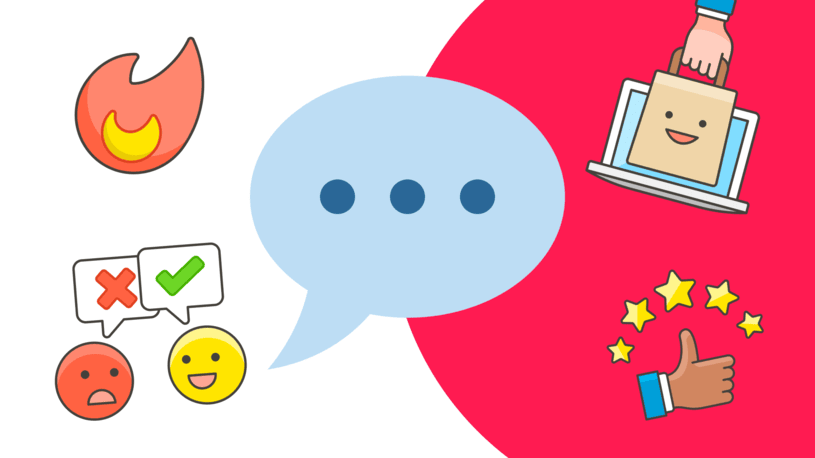
Why are live chat best practices so important? Instant gratification is a phenomenon present in many aspects of our lives, so today’s customers don’t just prefer fast communication — they expect it.
Studies show that even a one-minute delay in a live chat response can mean the difference between a completed purchase and an abandoned cart. However, speed is just one aspect of live chat customer communication done well.
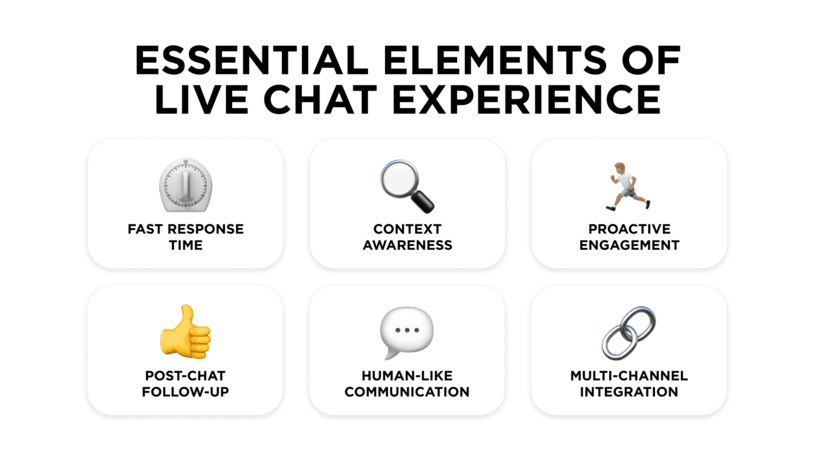
In this article, we share ten live chat best practices that will result in shorter sales cycles, increased conversions, and stronger customer relationships.
Table of contents:
Speed is paramount
Customers choose live chat specifically because it promises immediacy. When someone clicks a chat bubble on a website, they are making a deliberate choice that real-time interaction is worth the effort.
The first 30 seconds are crucial for instilling certainty and trust in a customer’s mind. 90% of customers rate an immediate response as ‘important’ or ‘very important’ when they have a customer service question. Even a simple auto-reply ("Hi! Thanks for reaching out — an agent will be with you in a moment") does more than buy time: it closes the psychological gap and transforms a customer’s uncertainty into expectation.
Use smart routing so incoming messages go to the next available agent. An auto-reply immediately reassures visitors that help is on the way.
Be proactive
Some of the most valuable interactions are the ones customers do not initiate themselves. Think of this as the difference between wandering a store hoping to find help versus having a knowledgeable associate appear exactly when you need them.
For example, when a visitor stays on a pricing page for more than 60 seconds, they're not casually browsing. They are highly likely to be doing calculations, making comparisons, or hesitating. Such moments are opportunities for proactive live chat invitations. Studies show that proactive chat increases average order values, conversion rates, customer satisfaction, and top-line profits.
However, execution matters. There's a fine line between being helpful and intrusive. Context-aware messages triggered by high-intent behaviors (staying on a checkout page, repeated product page visits, etc.) give the impression that someone is actually paying attention.
- “Hi! I see you're comparing our pricing plans. Want help picking the best fit?" feels like genuine assistance because it acknowledges exactly where the customer is in their journey.
- "Looks like you're checking out! Have any last-minute questions?" works because it removes friction without adding pressure.
Map your customer's journey to identify friction points, set up intelligent behavioral triggers with contextual scripts, and continuously analyze engagement and conversion data to refine your strategy.
Personalize every interaction
When a customer initiates a live chat session, there is already some context to it: pages they've browsed, products they've considered, problems they've encountered. Yet most businesses force them to start from zero, re-explaining the situation. First, it is inefficient and wastes the agents’ time; and second, it signals to the customer that you don't really know them, which makes them doubt they should trust you with their business. The paradox of modern support: companies have more customer data than ever, yet most interactions remain so robotic.
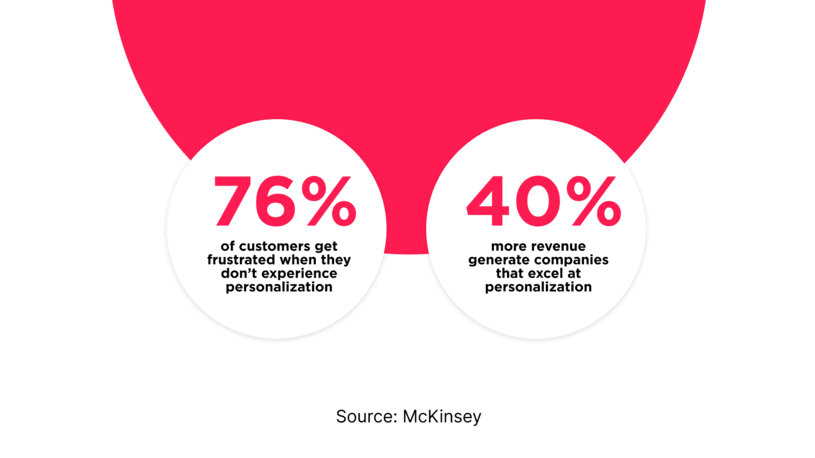
Address customers by name, reference previous chats or purchases, and tailor recommendations to their profile.
- "Welcome back, Sarah! I noticed you viewed our Pro-X Scooter last week — would you like to know if it's on sale today?" This says: “We remember you. Your interest matters. We're continuing a conversation, not starting over.”
- "Hi David! I see you're a proud owner of our ProShot X1 camera. The 50mm lens you're looking at is a fantastic pairing for portrait photography with that specific model. Want to learn how it compares to the zoom lens?" This script works because it applies to a specific scenario, like a customer who bought a camera a couple of months ago and is now browsing lenses.
There is a distinction between helpful context and invasive behavior. Referencing someone's current page or recent browsing ("I see you're looking at our enterprise pricing") feels useful because it's immediate and relevant. Mentioning something more personal or from a year-old purchase history can feel creepy. If a customer would reasonably expect you to know something based on their current session or recent account activity, it is context; if it feels like you're reading their diary, it's overreach.
Use live chat tools that gather real-time visitor data: current page, referral source, previous purchases, and recent support tickets. Train agents to start with relevant context rather than generic greetings, and test whether such personalization increases engagement rates and reduces time-to-resolution compared to standard scripts.
Use scripts, but keep them human
Templates and scripts can speed up responses and ensure consistency when dealing with common inquiries, sending greetings, and troubleshooting. However, relying too heavily on canned replies often leads to robotic and impersonal conversations, which negatively impact the customer experience.
- “I’m sorry you’re having trouble logging in — let’s get this sorted out together. Could you tell me which browser you’re using right now?”
- “If you’d like to cancel your order, please provide me with your full name and order number.”
Invest resources in creating a library of polished and approved chat scripts to handle routine interactions. Train agents to use these scripts as flexible starting points. Encourage them to customize the tone, wording, and pacing as necessary. Analyze chat transcripts and customer feedback to continuously optimize the scripts, keeping them relevant and human.
Integrate live chat with CRM
Connecting live chat (along with other communication channels) to your customer relationship management (CRM) system unlocks its full potential, turning isolated conversations into valuable interactions that drive sales, retention, and customer satisfaction.
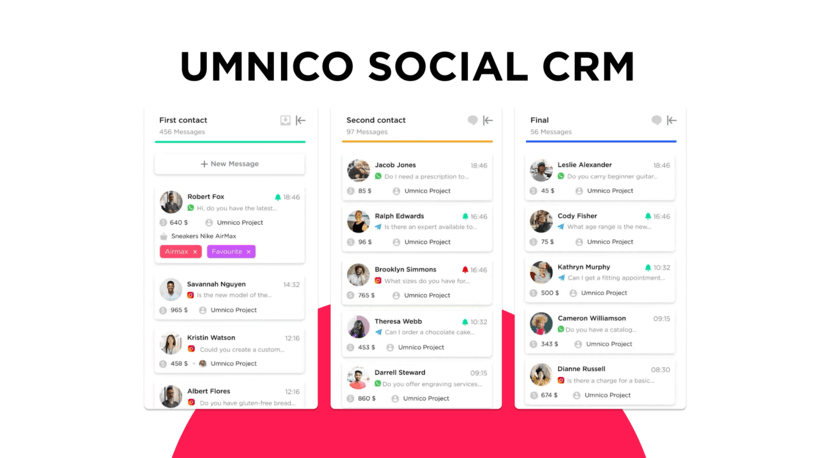
- Create unified customer profiles. Merge live chat data with order history, support tickets, and customer preferences to get a comprehensive view of the customer. This allows agents to anticipate needs, personalize conversations, and resolve issues faster.
- Track and qualify leads. Use chat interactions to score and tag leads in your CRM based on keywords, engagement level, or expressed intent. This way, you can prioritize follow-ups and accelerate the sales cycle.
- Analyze chat metrics within CRM. Use CRM dashboards to analyze chat volume, response times, and customer sentiment. Use the insights to optimize support and sales.
Umnico Social CRM enables businesses to bring live chat, social media and messaging apps into one unified view, capturing leads and managing customer relationships efficiently. It stores the entire conversation history and related records, making them easily accessible to the team. The platform boosts customer engagement and conversion rates by automating responses, tracking dialogue sources, and assigning leads to relevant agents.
Manage expectations during offline periods
Customer satisfaction isn’t about what actually happens—it’s about the difference between what customers expect and what they perceive they got. When someone sees a chat widget, they usually expect instant help. If the widget only says “offline” or gives no clear message, it breaks that expectation and leads to frustration.
Instead of promising instant help during after-hours, promise a delayed but guaranteed reply. A specific response time replaces uncertainty with clarity, reducing stress and earning customer trust.
- Define the timeframe. “Thank you for reaching out. We have received your email and will get back to you within 24 hours.” If a customer is told “we’ll reply within 24 hours” and gets an answer in 18, they feel taken care of. However, without a timeline, that same 18-hour reply feels late and like nobody has paid attention.
- Provide closure. “Here is a link to our Help Center”. An unclear reply leaves customers mentally waiting for resolution (the so-called Zeigarnik effect). Giving them a clear next step, like a specific reply time or self-service option, closes that loop and eases anxiety.
Keep the tone consistent and human
In live chat, your tone is your brand. A warm, natural voice builds trust and turns simple chats into lasting loyalty.
- Define your brand voice. Create a short guide for your team that shows exactly how your brand should sound. Include simple examples of what to say and what to avoid so every agent communicates consistently.
- Use short, flexible phrases instead of long, canned responses. This keeps chats sounding genuine while letting agents personalize each message naturally.
- Adopt empathy as a strategy. Empathy drives loyalty and revenue. Encourage agents to use friendly language (even occasional emojis) to show customers they’re truly heard and cared for.
Collect feedback
Feedback helps you understand what works and what doesn’t, catch problems early, and turn insights into actionable tactics.
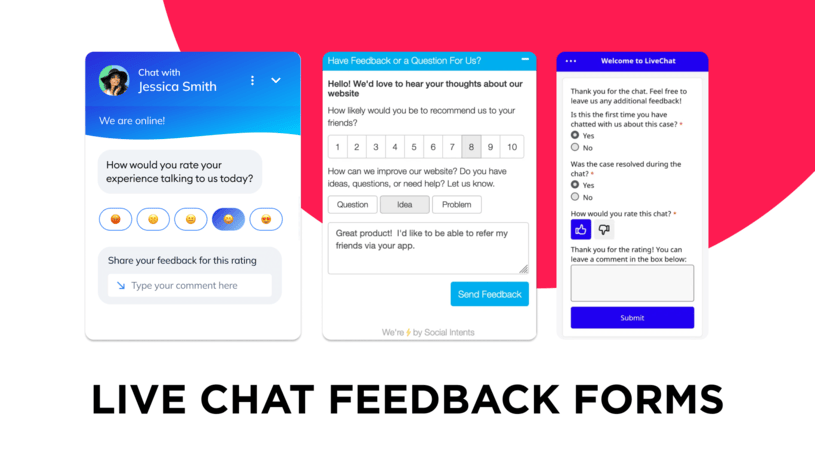
- Make feedback effortless. Use a one-click survey (“How would you rate your chat experience today? 👍 / 😐 / 👎”) that appears right inside the chat as soon as it ends. The easier it is, the more honest responses you’ll get.
- Ask “Why?”. Don’t stop at a rating — find out what caused it. After the customer clicks, ask one short follow-up: “What did we do well?” for positive feedback or “What could we improve?” for negative feedback.
- Close the loop fast. Feedback is useless if you don’t act on it. Review it with the agents involved and use it for coaching. For negative reviews, follow up personally within 24 hours — a simple, sincere message from a manager can often turn a disappointed customer into a loyal one.
Train a high-performing team
Great chat support comes from an ongoing system built around knowledge, empathy, and self-improvement.
- A single source of truth. When agents have to dig for answers, customers get frustrated. Keep the knowledge base practical and easy to search. Use short snippets, pre-approved responses, and checklists instead of long articles.
- Focus on empathy and tone. Review real chat transcripts in team sessions. Role-play challenging scenarios, like calming an upset customer or explaining a limitation. Teach phrasing that feels positive (“Here’s what I can do” instead of “We can’t do that”) and empathetic (“I understand how that feels”).
- Continuous learning. Set up a weekly peer-review system where agents anonymously rate a few chats based on clarity, tone, and effectiveness. This helps identify training needs and lets top performers share what works.
Measure and improve
Use analytics on live chat interactions and collected feedback to improve customer experience.
- Speed and quality. Track quality metrics like Customer Satisfaction (CSAT) and First Contact Resolution (FCR) alongside response times. If an agent is fast but has low CSAT, they may be rushing. Use this insight for targeted coaching to improve both speed and accuracy.
- Determine repeated issues. Tag recurring issues in your chat transcripts (like “pricing confusion” or “delivery delay”). Count how often they appear and invest in fixing their root causes.
- Scale the best practices. Identify your best agents and study what makes them effective. Turn their best lines into reusable snippets for everyone. Don’t shy away from AI tools for help: they can effectively analyze tone and suggest top-performing responses.
Frequently asked questions
Here are answers to some of the common questions regarding live chat best practices.
How to improve live chat service?
Focus on speed, agent training, and personalization. Reduce your First Response Time (FRT) by staffing appropriately and using templates for common inquiries. Invest in comprehensive training so agents have deep product knowledge and strong soft skills. Finally, use customer data to personalize conversations. Analyzing chat transcripts and customer satisfaction (CSAT) scores will reveal actionable live chat tips specific to your business.
What are the basic rules and etiquette for chatting?
Proper live chat etiquette is essential for a professional customer experience.
- Be prompt & polite. Greet the customer quickly and introduce yourself by name.
- Use clear & consistent language. Avoid jargon, slang, and typing in ALL CAPS. Be friendly and positive.
- Communicate wait times. If you need time, tell the customer how long it will take until you get back to them with a solution.
- Proofread for spelling and grammar errors before sending.
- Close professionally. Always ask, "Is there anything else I can help you with today?" before ending the chat.
How to measure the effectiveness of live chat?
Track key performance indicators (KPIs), including:
- Customer Satisfaction (CSAT): ask customers to rate their experience in a post-chat survey.
- First Response Time (FRT): how long a customer waits for the first agent reply.
- Average Resolution Time (ART): the average time it takes to solve a customer's issue from start to finish.
- Conversion Rate: the percentage of chats that result in a sale, sign-up, or other desired goal.
- Missed Chats: the number of chat requests that went unanswered.
Final thoughts
Do not perceive live chat support as just another business expense. With the right approach, it can become an effective engine for generating sales, growing conversions, and building customer loyalty.
If you are looking for a suitable solution, consider Umnico Live Chat. Its fully customizable chat widget allows agents to message customers as they browse the website, integrates seamlessly across popular messengers and social media, and synchronizes all conversations in a single interface. All new users can try it for free during a trial period.
You might be interested in similar topics
Customer Experience Optimization: What You Should Know

Subscribe to Umnico news!
Be the first to get recommendations and up-to-date information
